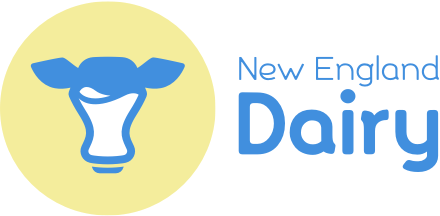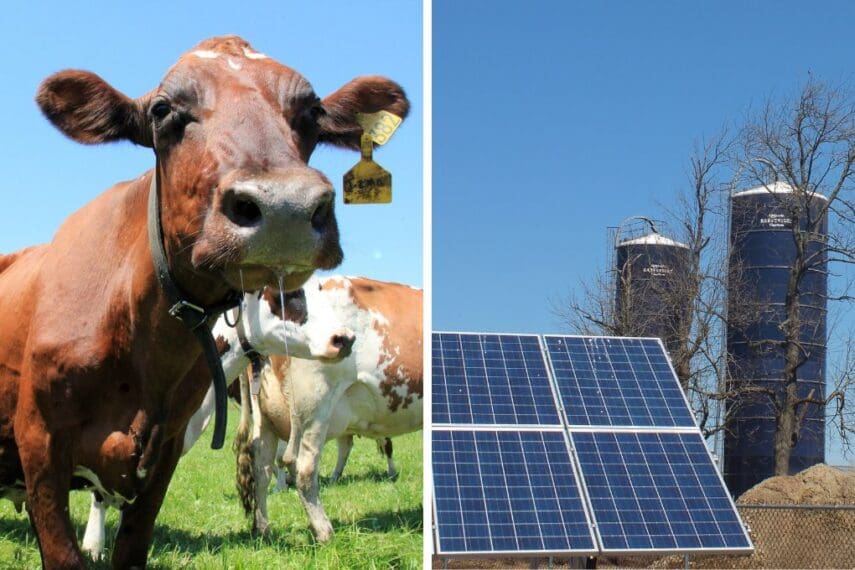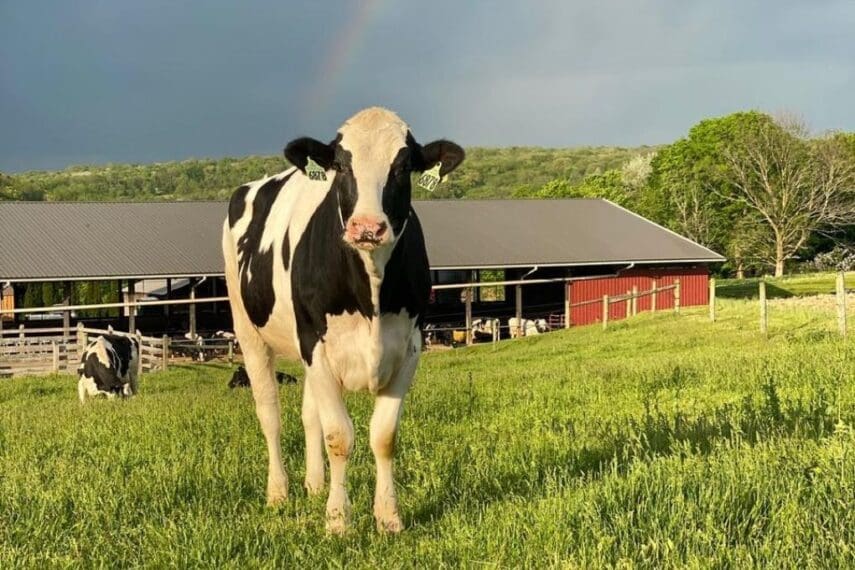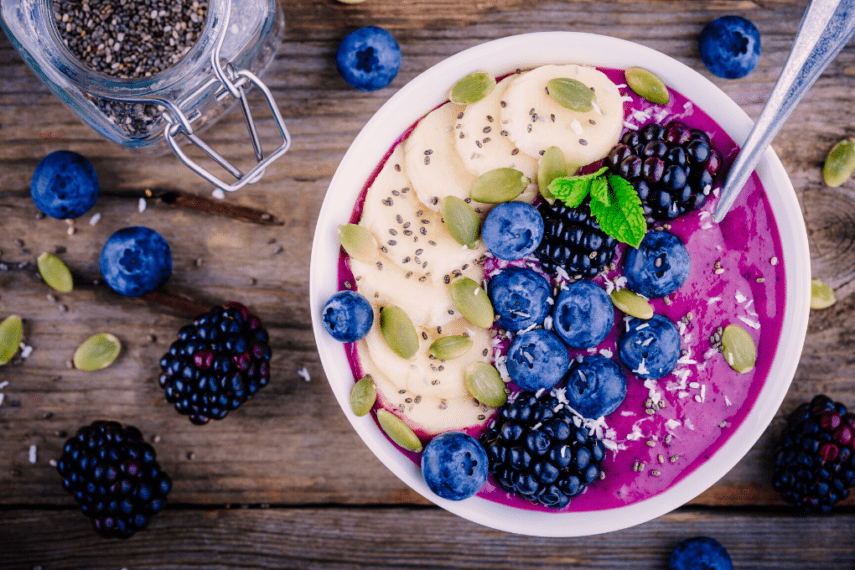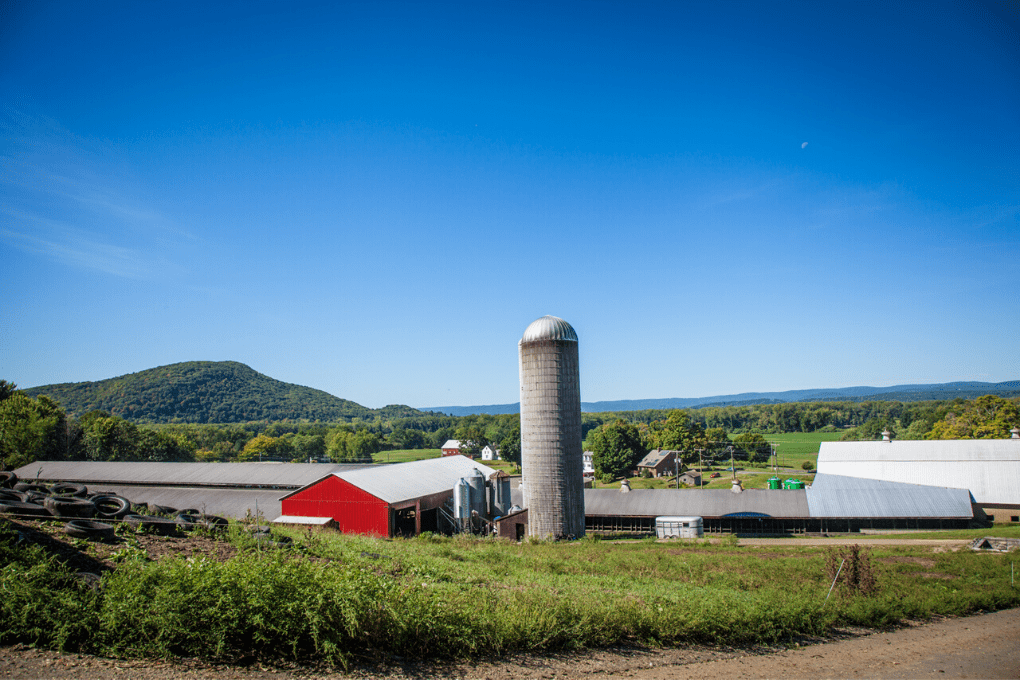
Climate change has challenged our society to adopt practices and technologies to cut fossil fuels, reduce emissions, and live more sustainably. With razor thin margins, farmers are being further tested. Our livelihood directly depends on a healthy economy, a healthy community, and a healthy planet. Here are a few reasons why dairy farms are part of the climate solution.
Cows Recycle Food We Can’t Eat
You know you’ve made it as a farmer when you buy a cow. The goats clear the land, the pigs eat the scraps, the chickens feed the family, the farmer tends the fields, but the cow, she does it all. Cows are natural recyclers and they can help us rethink the food waste stream in our communities, reducing greenhouse gas emissions.
Barstow’s Longview Farm in Hadley, MA is a sixth and seventh generation dairy farm that’s been in operation since 1806. We feed our herd from the land we farm, harvesting corn, hay, and alfalfa from wide open Massachusetts farmland.
We also feed our cows cranberry pulp from cranberry juice production. Most people see this as food waste, but for us, it’s a plant-based sugar we can feed our girls (milking cows need about 4% sugar in their diet). Mixed right in with the silage, it’s a lot like a glass of orange juice with breakfast. Through the bitter New England winter, we also offer our animals a natural starch of “second potatoes,” or ugly potatoes, that shoppers wouldn’t buy in the grocery store.
Living in Massachusetts, cranberries and potatoes are readily available foods, part of an important and historic state identity. Other dairy cows across the nation recycle food byproducts in their communities too – peels, pits, pulp, veggies, fruits, even almond hulls.
These food byproducts, with minimal nutritional value, might have ended up in landfills, contributing to greenhouse gas emissions. Instead, our girls converted that food waste into high quality, nutrient-rich milk.
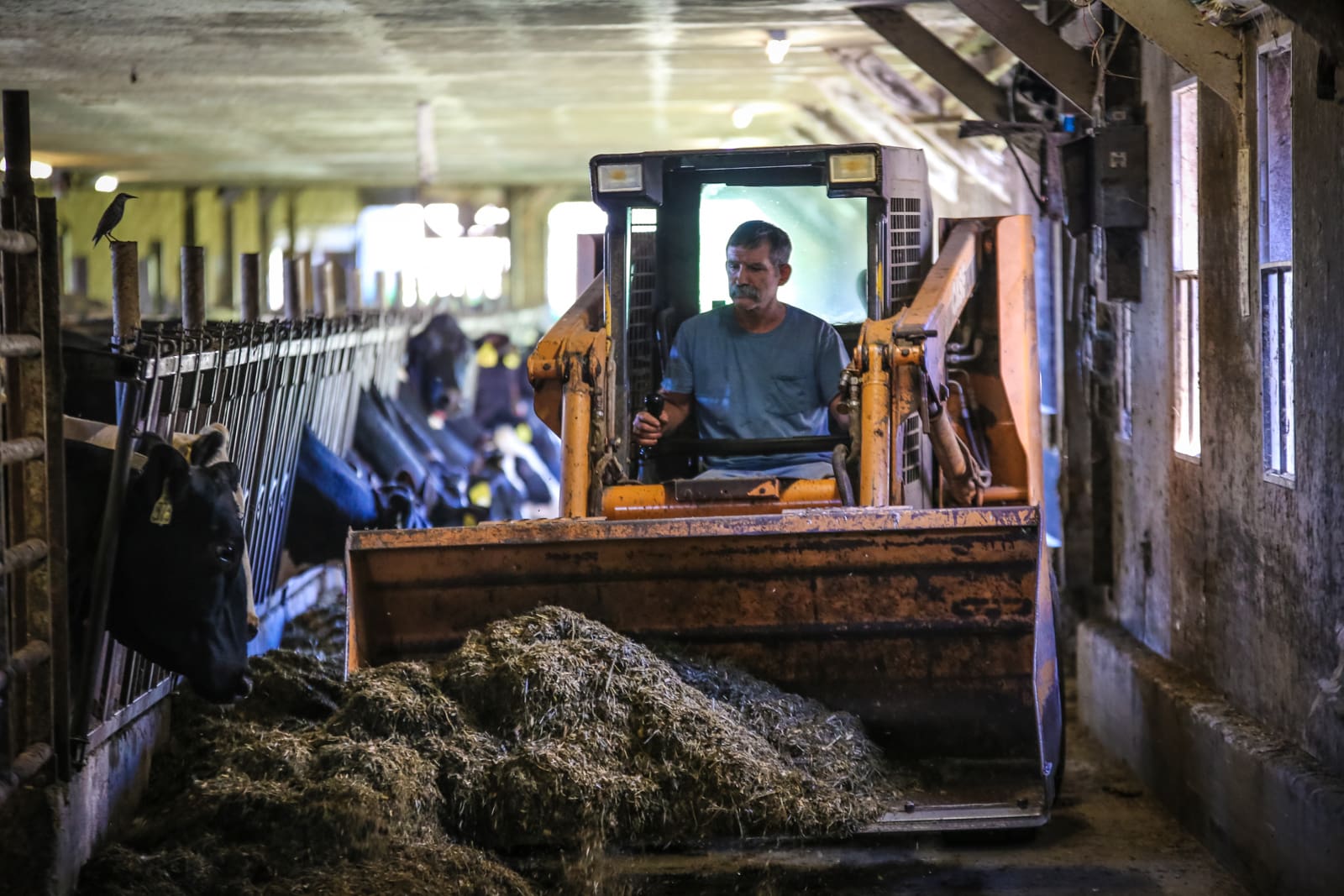
Cow Manure: A Natural Fertilizer and Power Source
Here at Barstow’s Longview Farm, an anaerobic digester captures the methane from food waste and cow manure. The system provides renewable electricity to 1,600 local homes, heats the family farmhouses, diverts food waste from landfills, reduces farm odor, minimizes chemical fertilizer use, improves soil health and crop yields, and reduces our carbon hoof-print by 85%.
According to the EPA, U.S. agriculture contributes 9% of the country’s greenhouse gas emissions. Half comes from animal production, the other half from crop farming. If we did away with animal agriculture, there would be only a 2.6% reduction in total emissions.
Why so little?
To start, to make up for lost nutrients in our diet from meat and dairy, we would need to grow or import more plant foods. And without manure from animals, farmers would rely on more chemical fertilizers.
Additionally, we would lose our natural recyclers. Cows across the nation are eating up food waste that would end up in landfills. Cows also support open landscapes that sequester carbon through plant life. Farmers are maintaining farms with compost operations and anaerobic digesters; systems that recycle food waste, improve soil health, and keep farmland open.
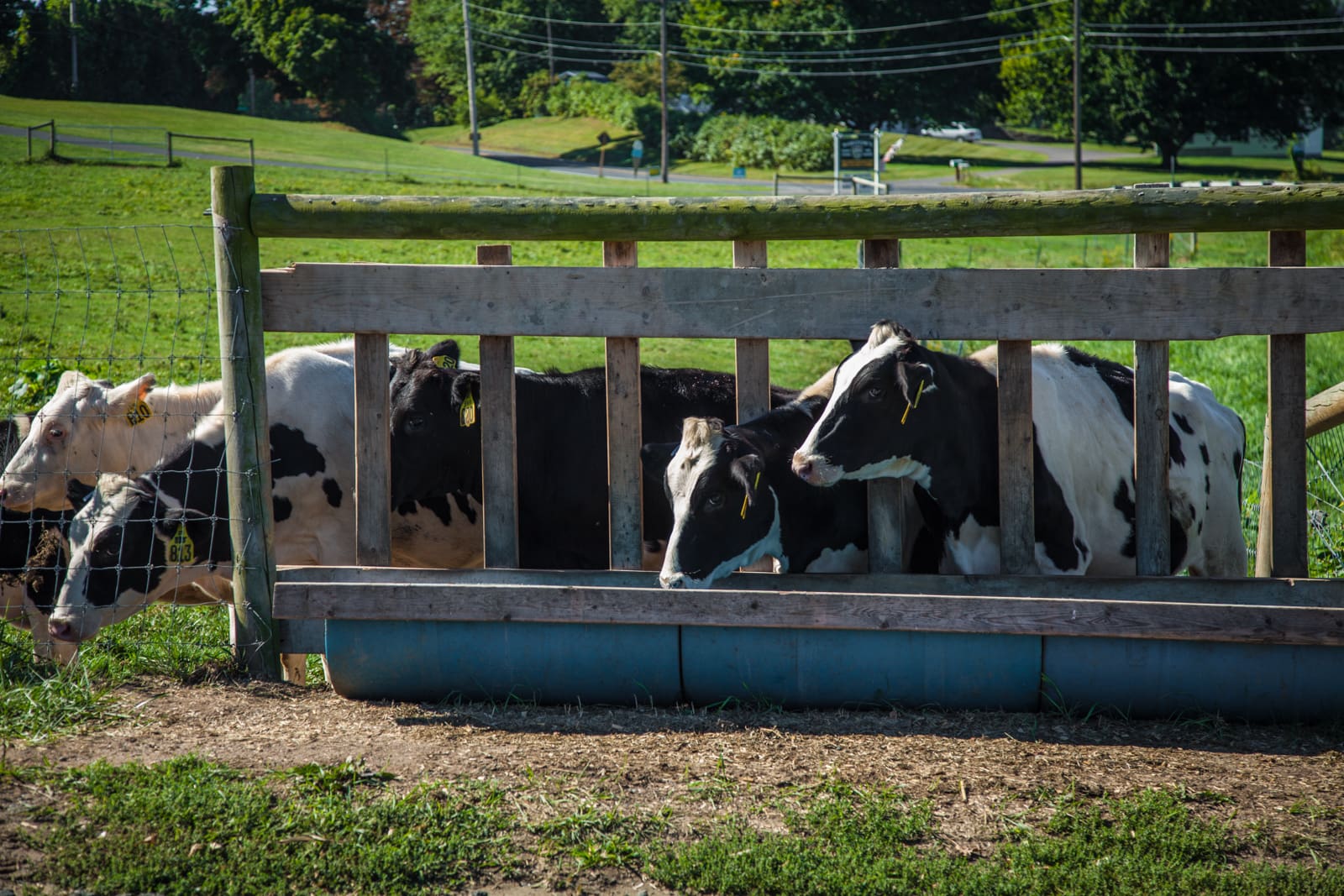
Let’s Work Together for a Healthy Planet
Plants and animals have been cohabiting for millennia, it’s an ecosystem that works and can continue to work in this century with this technology with these farmers!
Farmers and their cows have been closing loops and reducing waste for generations – it’s better for our cows and for our bottom line. As of 2007, producing a gallon of milk uses 90% less land and 65% less water, with a 63% smaller carbon footprint than in 1944. Data comparing 2007 to 2017 shows an additional reduction of 30% less water and 21% less land, a 19% smaller carbon footprint.
Like the barnyard with goats, pigs, chickens, and cows, each is a solution to a healthy, sustainable farm. As policy makers look to lay the ground work for a healthy, sustainable nation – one piece of the puzzle lies with the climate-friendly practices that can be found on dairy farms in their backyard. Making food and recycling it – the farmer and her cow are a part of the solution too – and we don’t shy away from hard-work either.
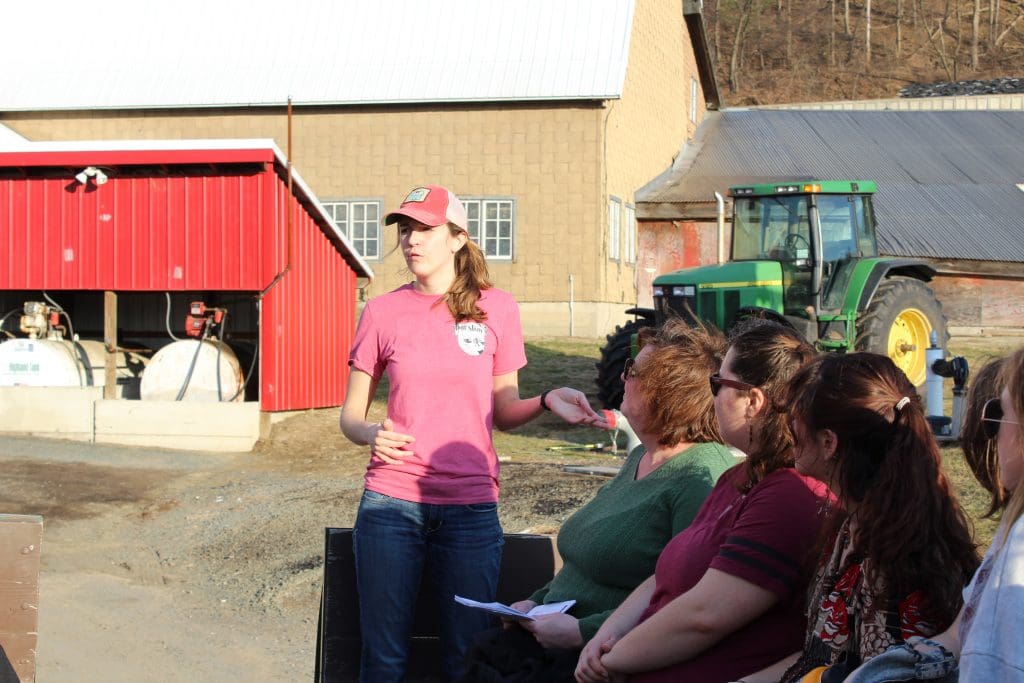
To learn more about Barstow’s Longview Farm visit our website, Facebook, or Instagram.
